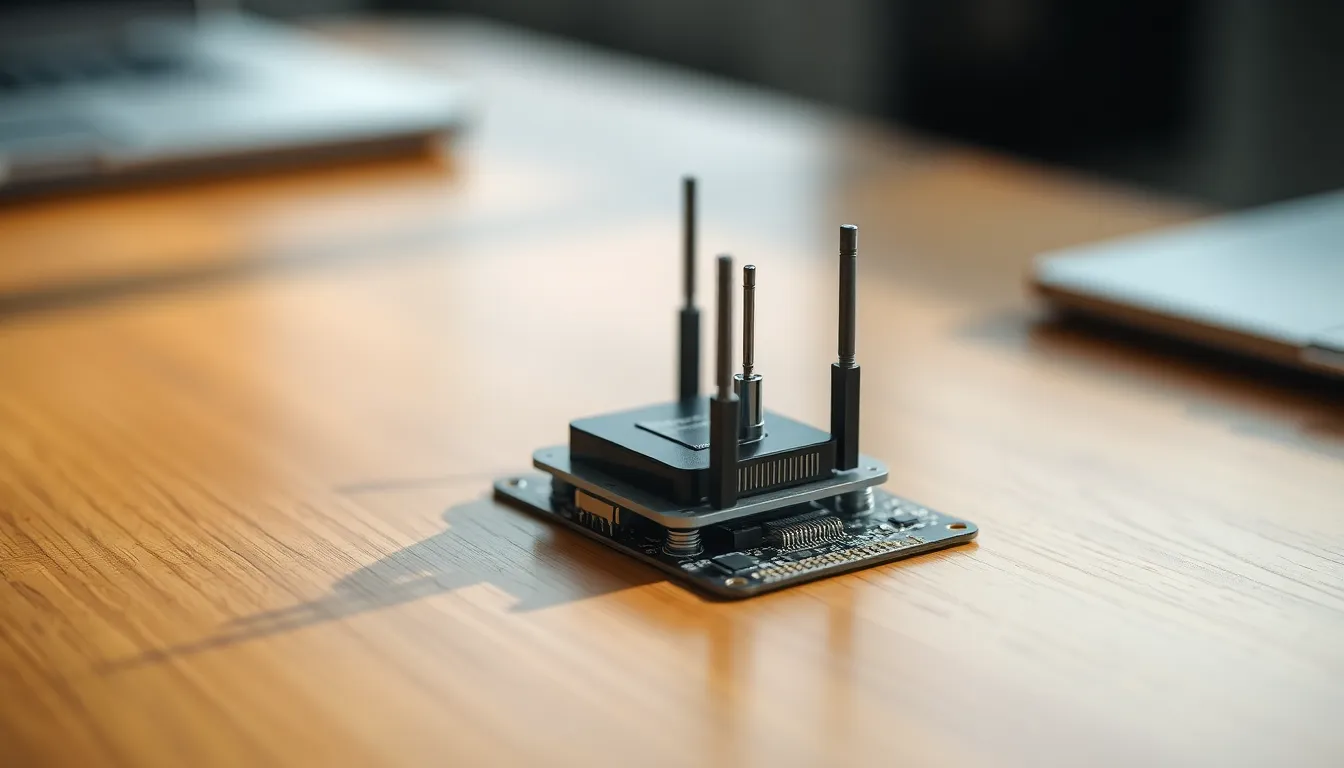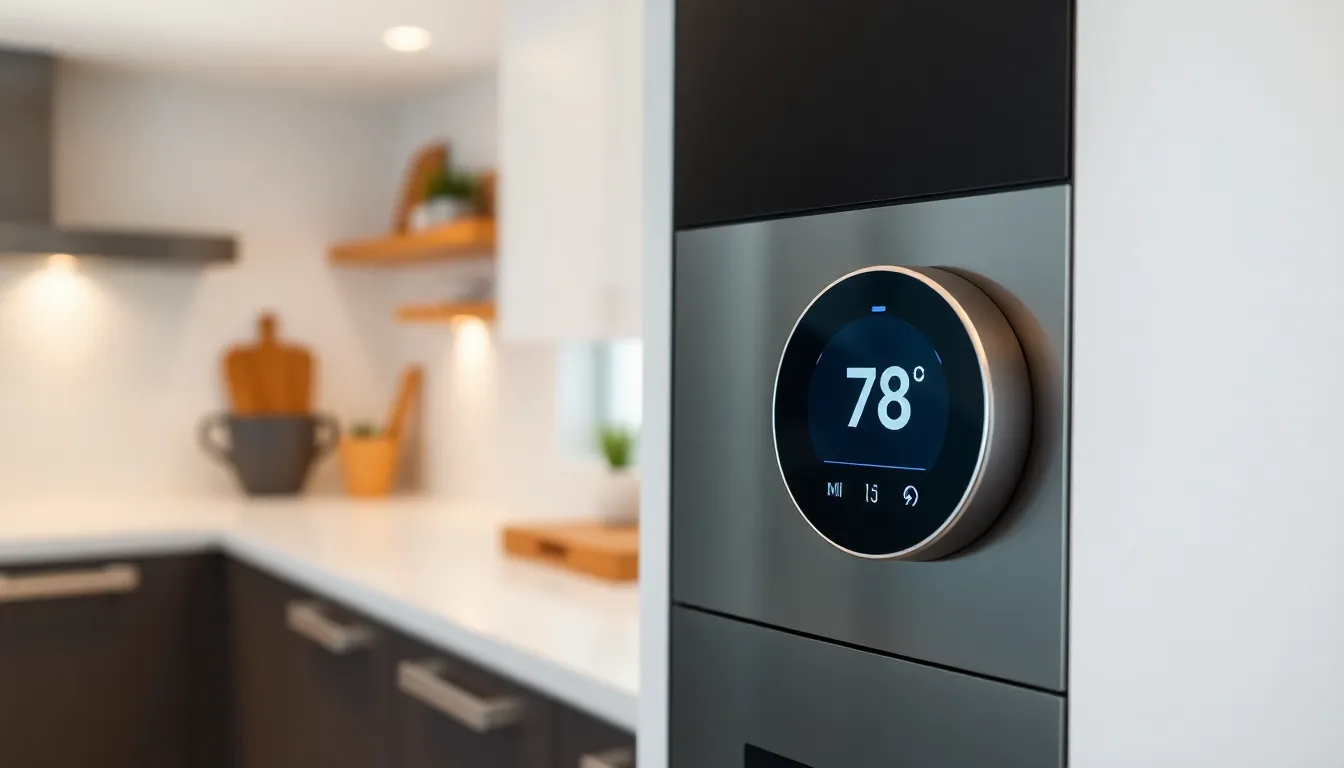In a world where your fridge can remind you to buy milk and your thermostat knows when you’re too hot to handle, IoT operating systems are the unsung heroes behind the curtain. These clever systems power everything from smart homes to industrial machines, making life smoother and a bit more magical. Who knew that a little software could turn everyday objects into tech-savvy companions?
Table of Contents
ToggleOverview of IoT Operating Systems
IoT operating systems serve as the backbone for interconnected devices. They provide the necessary software environment for devices to communicate and function. These systems facilitate efficient data processing and enable real-time responses.
Common IoT operating systems include FreeRTOS, Contiki, and Azure Sphere. FreeRTOS stands out for its lightweight design, making it suitable for microcontrollers. Contiki specializes in low-power devices, offering support for IPv6 communication. Azure Sphere integrates security features, ensuring safe connections for smart devices.
Device management plays a crucial role in IoT operating systems. They allow for updates, configuration changes, and monitoring. These capabilities enhance the reliability and performance of IoT devices. Furthermore, developers rely on these systems to streamline application development.
Customization options within IoT operating systems vary by type. Some provide modular components that developers can tailor to specific needs. Others offer extensive libraries and frameworks to facilitate rapid development.
Integration with cloud platforms is vital. Many IoT operating systems seamlessly connect with cloud services, enabling data storage and analytics. This capability allows businesses to leverage insights from device data.
Considering scalability is essential when selecting an IoT operating system. Some systems accommodate large networks of devices without compromising performance. Others excel in environments with limited resources.
Robustness and security also factor into the effectiveness of IoT operating systems. Protection against cyber threats remains a top priority. They incorporate encryption and secure access controls to safeguard sensitive information.
Key Features of IoT Operating Systems

IoT operating systems possess several key features that enhance the functionality and performance of connected devices. These features ensure efficient operation in dynamic environments.
Efficiency in Resource Management
Efficiency in resource management remains crucial for IoT operating systems. Devices equipped with these systems often have limited processing power and battery life. By optimizing CPU usage and memory allocation, they extend device longevity. Systems like FreeRTOS excel in managing resources effectively while maintaining responsiveness. Prioritized task scheduling allows for critical tasks to proceed without delay. Moreover, low-power modes are available to conserve energy during inactivity. This efficient management minimizes operational costs while maximizing performance across various applications.
Support for Multiple Protocols
Support for multiple protocols enables seamless communication between diverse devices. IoT operating systems often incorporate various networking protocols to ensure compatibility. Common protocols include MQTT, CoAP, and HTTP. These systems facilitate data exchange across different device types and manufacturers. Robust support for wireless standards such as Wi-Fi, Bluetooth, and Zigbee ensures flexibility for developers. By allowing devices to connect and interact, IoT operating systems create a cohesive ecosystem. Greater interoperability enhances user experiences within smart environments, promoting broader adoption of IoT technologies.
Popular IoT Operating Systems
Several IoT operating systems play crucial roles in powering connected devices across various industries. Each system offers unique features tailored to specific applications.
FreeRTOS
FreeRTOS stands out for its lightweight architecture, making it ideal for memory-constrained devices. This operating system supports multitasking, enabling multiple applications to run simultaneously without interference. Developers appreciate its simplicity and ease of integration with various microcontrollers. With strong community support, FreeRTOS benefits from a wealth of resources and examples. The system supports a range of communication protocols, enhancing interoperability among devices. Users can implement it in applications ranging from home automation to industrial controls.
RIOT
RIOT provides a robust platform designed for low-power, resource-constrained devices. Its modularity allows developers to customize the system based on specific needs. This operating system supports various networking protocols, which boosts connectivity options and enhances interoperability with other IoT devices. Designed with real-time capabilities, RIOT ensures timely task execution crucial for operational stability. The focus on energy efficiency helps extend the battery life of connected devices. Developers often choose RIOT for smart grid applications, wearables, and health-monitoring systems.
Zephyr
Zephyr aims at providing a scalable and flexible solution for IoT applications. Its architecture caters to devices with diverse resource requirements, from small sensors to more powerful edge devices. Open-source and community-driven, Zephyr fosters collaboration and innovation among developers. This operating system offers comprehensive support for multiple protocols, ensuring seamless communication across various networks. Security features integrated within Zephyr enhance protection for connected devices, crucial in today’s cyber landscape. Developers regularly implement Zephyr in applications related to smart cities, automotive systems, and industrial automation.
Comparison of IoT Operating Systems
IoT operating systems differ significantly in their performance metrics and security features, impacting device selection and deployment.
Performance Metrics
Performance metrics for IoT operating systems focus on efficiency, scalability, and responsiveness. Resource utilization is a critical metric, as systems like FreeRTOS excel in minimizing CPU usage, enhancing longevity in low-power devices. Throughput and latency also play a vital role, especially for real-time applications; Contiki shows proficiency in delivering low-latency responses for smart grid communications. Scalability matters too, with Zephyr supporting thousands of devices effectively, making it suitable for large-scale installations. Robustness is another essential metric; RIOT ensures stable operation in challenging environments. Collectively, these metrics guide users in choosing an IoT operating system tailored to their specific needs.
Security Features
Security features in IoT operating systems are paramount, protecting devices from cyber threats. Azure Sphere incorporates cutting-edge security protocols, ensuring secure boot protection coupled with regular updates. Authentication methods also vary; FreeRTOS provides robust options to authenticate device identities. Data encryption is essential for safeguarding sensitive information, with systems like Zephyr offering advanced tools for secure communication. Each operating system must maintain compliance with evolving security standards, as RIOT aligns with industry protocols to ensure data integrity. Attention to security fosters trust and reliability, crucial for widespread IoT adoption.
Challenges in IoT Operating Systems
Challenges often arise when developing IoT operating systems, impacting device performance and usability. Notably, scalability and compatibility issues pose significant obstacles for effective implementation.
Scalability Issues
Scalability remains a critical concern for IoT operating systems. Many devices often require expansion to accommodate increasing numbers of connected units. Addressing this need for growth can strain system resources. Inefficient resource allocation may lead to degraded performance as the network expands. For example, FreeRTOS manages to maintain responsiveness but can struggle under heavier loads. This limitation can hinder the deployment of larger IoT applications in smart homes or industrial settings. Additionally, ensuring consistent performance across various device types adds complexity to scalability. As a result, developers must prioritize efficient design and architecture to support extensive networks without sacrificing performance.
Compatibility Challenges
Compatibility challenges frequently arise within IoT ecosystems due to diverse technologies. Different devices may utilize various communication protocols and hardware architectures, complicating seamless interaction. Ensuring multiple devices work together effectively is crucial for user experience and functionality. For instance, while Zephyr supports a wide range of devices, some manufacturers prefer proprietary solutions. This discrepancy can result in interoperability issues. Reliance on standard protocols can help alleviate these challenges, yet adoption across the industry remains uneven. Thus, addressing compatibility concerns is essential for realizing the full potential of interconnected IoT systems. Developers must focus on creating adaptable solutions that foster communication among a broad array of devices.
The evolution of IoT operating systems is pivotal in shaping a smarter future. By enabling seamless communication and efficient data processing, these systems empower devices to interact intelligently. With a focus on security and performance, they address critical challenges while enhancing user experiences.
As the IoT landscape continues to grow, the importance of selecting the right operating system becomes increasingly clear. Each option offers unique features tailored to specific applications, ensuring that devices can function optimally in diverse environments. Embracing these advancements not only boosts efficiency but also fosters innovation across various industries. The journey toward a fully connected world is just beginning, and IoT operating systems will be at the forefront of this transformation.




